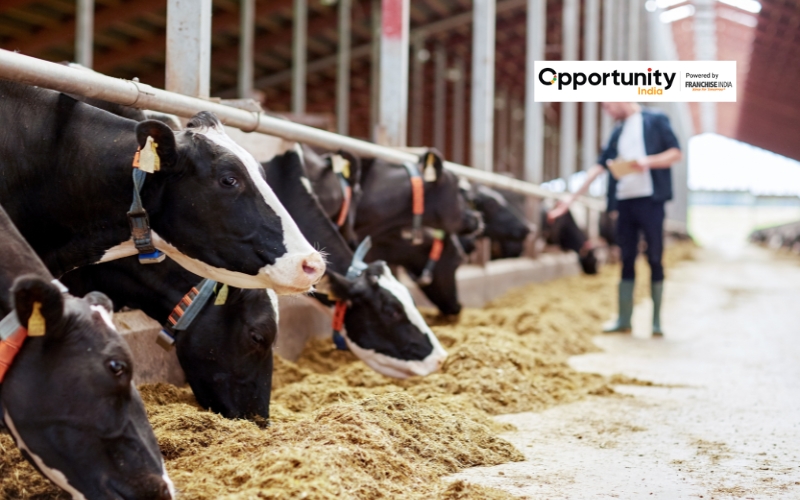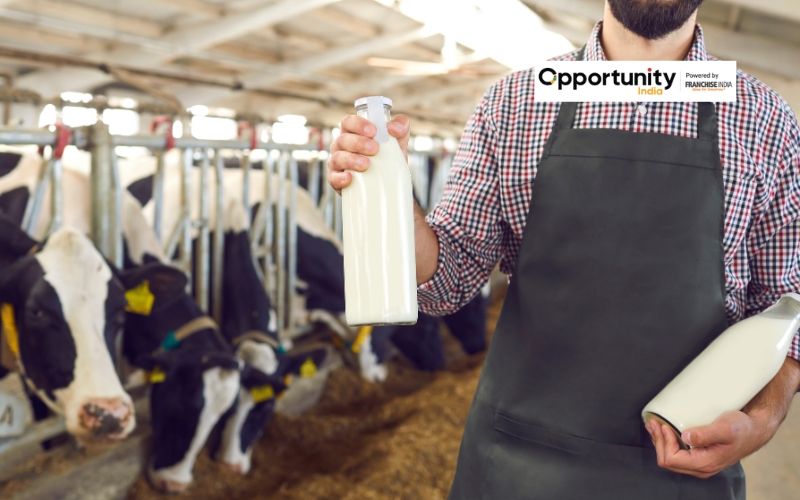
You would undoubtedly anticipate India's dairy industry to flourish if someone told you that the country is the world's largest milk producer. After all, we produce more milk than any other nation in the world, with over 231 million tonnes produced each year. The catch is that the dairy sector in India is far from ideal. There are significant obstacles underlying those remarkable output figures, obstacles that impact farmers, consumers, and business owners equally. Let’s understand these challenges the Indian dairy industry is facing in detail.
Overview of the Indian Dairy Sector
With around 23% of the world's milk production, India is the world's greatest producer. A significant contributor to the rural economy in India, the dairy industry supports a large number of rural households, the majority of which are small and marginal farmers. The industry has experienced rapid expansion due to rising demand for dairy products and a change in customer preferences toward nutrition and health. This expansion is not without difficulties, though.
First, let's acknowledge that dairy is essential to the lives of millions of Indian rural families. A few cows or buffalo provide the majority of the income for small farmers, particularly women. However, the dairy industry is suffering from a number of both new and old issues, despite the fact that it contributes to rural livelihoods and our GDP. Products including liquid milk, ghee, curd, paneer, butter, and milk powder drive the Indian dairy industry. Although most milk has historically been consumed in liquid form, urbanization, shifting consumer preferences, and rising health consciousness have all contributed to the value-added dairy segment's recent rapid rise in popularity.
The industry has problems like low production per animal, poor infrastructure, and disorganized market systems, even though it is one of the world's leading producers. However, the industry is changing due to the growing demand for premium dairy products, rising disposable incomes, and the expansion of cold chain logistics and e-commerce. India's dairy industry is a major area for future investment and development since it has expanding potential in global markets, especially in Southeast Asia, the Middle East, and SAARC countries.

Challenges in The Dairy Sector Business
India has a unique pattern of production, processing and marketing/consumption of milk, incomparable to any large milk producing country. India is the world’s largest milk producer and consumer of dairy products, consuming almost 100% of its own milk production. The Indian dairy sector is different from other dairy producing countries as emphasis is placed on both cattle and buffalo milk. In order to achieve greater profitability, quality standards need to be improved. Following are some of the practical dairy farming challenges in India.
Shortage of feed/fodder
There is an excessive number of unproductive animals which compete with productive dairy animals in the utilisation of available feeds and fodder. The grazing area is being reduced markedly every year due to industrial development resulting in shortage of supply of feeds and fodder to the total requirement. Ever increasing gap between demand and supply in feeds and fodder limits performance of dairy animals. Moreover, provision of poor quality of forage to dairy cattle restricts animal production system. The low capability of purchasing feeds and fodder by the small and marginal farmers and agricultural labourers engaged in dairy development result in inadequate feeding. Non-supplementation of mineral mixture results in mineral deficiency diseases. High-cost Feeding reduces the profits of the dairy industry.
Breeding system
Late maturity, in most of the Indian cattle breeds, is a common problem. There is no effective detection of heat symptoms during the oestrus cycle by the cattle owners. The calving interval is on the increase resulting in a reduction in efficiency of animal performance. Diseases causing abortion lead to economic loss to the industry. Mineral, hormone, and vitamin deficiencies lead to fertility problems.
Education and Training
A vigorous education and training programmes on good dairy practices could result in the production of safe dairy products, but to succeed they have to be participative in nature. In this regard, education and training of all the employees is essential so that they understand what they are doing and develop a sense of ownership. However developing and implementing such programs in the dairy sector requires a strong commitment from the management, which at times, is a stumbling block.

Health
Veterinary health care centres are located in far off places. The ratio between cattle population and veterinary institution is wider, resulting in inadequate health services to animals. No regular and periodical vaccination schedule is followed, regular deworming programme is not done as per schedule, resulting in heavy mortality in calves, especially in buffalo. No adequate immunity is established against various cattle diseases.
Hygiene Conditions
Many cattle owners do not provide proper shelter to their cattles leaving them exposed to extreme climatic conditions. Unsanitary conditions of cattle shed and milking yards, leads to mastitis conditions. Unhygienic milk production leads to a reduction in storing quality and spoilage of milk and other products.
Marketing and Pricing
Dairy farmers are not getting remunerative price for milk supply. Due to the adoption of extensive crossbreeding programme with Holstein Friesian breed, the fat content of crossbreed cow's milk is on the declining condition and low price is offered as the milk price is estimated on the basis of fat and solid nonfat milk content. There is also a poor perception of the farmers, due to lack of marketing facilities and extension services, towards commercial dairy enterprise as an alternative to other occupation.
Wrapping Up
The dairy industry in India is a high-potential area for agribusiness entrepreneurs as well as the foundation of rural livelihoods. When combined with innovation, government assistance, and strategic investment, it offers high return potential despite significant obstacles like low productivity, a lack of infrastructure, adulteration, and climatic risks.
Building a successful and significant dairy business in India requires prospective dairy entrepreneurs or agri-startups to understand the local conditions, take advantage of relevant programs, and dedicate themselves to sustainable and technologically advanced methods.

